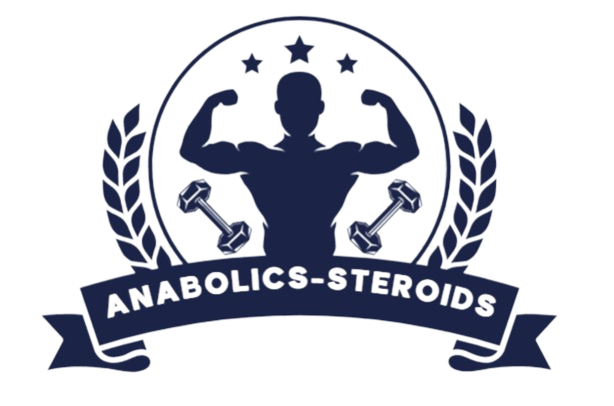Marathon season is here—that thrilling stretch from early spring through fall when tens of thousands of runners worldwide gear up for 26.2 miles of grit, strategy, and personal triumph. Whether you’re chasing a Boston Marathon qualifier, running your first-ever marathon, or just trying to go the distance stronger and more innovatively, now is the perfect time to get serious about training with this marathon training plan.
This guide cuts through the noise and gives you a no-BS, action-ready plan to get you to the finish line feeling confident. From weekly mileage strategies to long run tips, strength training essentials, and a 16-week plan, here’s everything you need to train hard, recover smarter, and race your best.
How To Set Your Marathon Training Plan Foundation
Before running a marathon, you must build your foundation brick by brick. Laying the proper groundwork—your aerobic base, weekly mileage, and gear setup—is the difference between making it to the start line ready and struggling through training.
Build Your Base
Your aerobic system is the engine that drives marathon success. Start slow and steady, focusing on time on feet, not pace.
Ideally, begin building a base 16–20 weeks before race day.
Weekly mileage:
- Beginners (~20–25 miles)
- Intermediate (~30–40), Advanced (40+)
Choose the Right Marathon Training Plan For You
- Beginner: 3–4 days per week, long runs up to 18 miles.
- Intermediate: 4–5 days per week, mix of speed and tempo, long runs up to 20 miles.
- Advanced: 5–6 days per week, higher volume, and race pace-specific work.
Marathon Training Gear Essentials
- Prioritize proper footwear with a gait analysis.
- Replace shoes every 300–500 miles.
- Invest in moisture-wicking gear, a GPS watch or app, and hydration tools.
Running-Specific Warmup: Prep Your Body to Perform
Before you lace up and take off, don’t skip your warm-up. Warming up primes your muscles, wakes up your nervous system, and helps prevent injury—especially when you’re stacking on weekly mileage. A good warm-up bridges the gap between resting and running, gradually raising your heart rate and activating key muscles used in your stride.
Here’s a quick, efficient warm-up you can do before any run, whether it’s a long slow distance day or a high-intensity interval session:
General Warm-Up
- Light Jog or Cardio Machine: 2 minutes
- Forward + Backward Skips w. Arm Circles: x20 each
- Forward + Backward Skips w. Arm Hugs: x20 each
- Lateral Shuffles: x20 each direction
- Carioca: x20 each direction
Dynamic Mobility
- Leg swings (forward/back & side-to-side): 10 reps each direction (each leg)
- Standing T-Spine Rotations: 10 reps (each direction)
- Strider Stretch + Rotation: 10 reps (each direction)
Running-Specific Dynamic Activation
- Forward Marching: 1 set, 10 reps (each side)
- Forward + Backward Rhythm Skip: 1 set, 10 reps (each side)
- High-Knees: 2 sets, 10 reps
- Butt-Kicks: 2 sets, 10 reps
- A-Skips: 2 sets, 5 reps
- B-Skips: 2 sets, 5 reps
- Acceleration Starts: 3 sets, 10 yards
Benefits of Incorporating Different Types of Run In Your Marathon Training Plan
Every run has a purpose. If you want to go the distance on race day, you need variety in your preparation. Here’s how each type of run is critical in making you a marathon machine.
Long Runs
- The cornerstone of marathon prep. Run them once per week and build up slowly.
- Peak long run distance: 18–20 miles for most runners.
Tempo Runs
- Improve lactate threshold and mental toughness.
- Example: 20–40 minutes at “comfortably hard” pace.
- Interval Workouts
- Boost VO2 max and running economy.
- Example: 6-8 800m at 5K pace with 90 sec. rest.
Easy & Recovery Runs
- Keep your effort easy enough to hold a conversation.
- These help promote recovery and aerobic efficiency.
Benefits of Strength Training for Marathon Runners
Hitting the weights a couple of times a week can make a massive difference in your form, efficiency, and resilience when the miles start to stack up. Plus, resistance training is the best way to build injury resilience.
- Reduces injury risk and improves running form.
- Increases power and stability, especially late in races.
Key Muscle Groups To Focus On
- Glutes,
- Hamstrings,
- Calves,
- Core,
- Single-leg movements.
Sample Workout Routine 1: 2 Times/Week
| Segment | Exercise | Sets x Reps |
| Plyometric Power | Alternating Lunge Jumps | 3 x 3 (each leg) |
| Strength Superset A | Hex Bar Deadlifts | 3 x 5 |
| Strength Superset A | Dumbbell Push Press | 3 x 6 (each arm) |
| Accessory Circuit | Split Squat ISO Hold | 3 x 15 sec (each leg) |
| Single-Arm Dumbbell Row | 3 x 8 (each arm) | |
| Half-Kneeling Dumbbell Chops | 3 x 15 (each side) | |
Sample Workout Routine 2: 2 Times/Week
| Segment | Exercise | Sets x Reps |
| Plyometric Power | Skater Jump | 3 x 3 (each leg) |
| Strength Superset A | Front Squats | 3 x 6 |
| Strength Superset A | Pull-Ups (Band Assisted) | 3 x 6-8 |
| Accessory Circuit | Single-Leg Dumbbell RDL | 3 x 8(each leg) |
| Split Stance Single-Arm Shoulder Press | 3 x 10 (each arm) | |
| Band Pullover Deadbug | 3 x 10 (each side) | |
Sample 16-Week Marathon Training Plan (Intermediate Level)
Here’s your week-by-week roadmap. This sample plan is designed for intermediate runners looking to build strength, stamina, and confidence over 16 weeks. Tweak it to fit your level, but keep the bones in place.
| Week | Mon | Tues | Wed | Thurs | Fri | Sat | Sun | Weekly Mileage |
| 1 | Rest | Intervals | Easy+ Strength | Mid-Distance | Rest | Long Run (6) | Easy (3) | ~ 22 Miles |
| 2 | Rest | Tempo Run | Easy | Mid-Distance | Strength | Long Run (8) | East (3) | ~26 Miles |
| 3 | Rest | Intervals | Easy + Strength | Mid-Distance | Rest | Long Run (10) | Easy (3) | ~ 30 Miles |
| 4 | Rest | Tempo Run | Easy | Mid-Distance | Strength | Long Run (6) | Easy (2) | ~ 24 Miles |
| 5 | Rest | Intervals | Easy +Strength | Mid-Distance | Rest | Long Run(12) | Easy (4) | ~.32 Miles |
| 6 | Rest | Tempo Run | Easy | Mid-Distance | Strength | Long Run (14) | Easy (4) | ~ 34 Miles |
| 7 | Rest | Intervals | Easy + Strength | Mid-Distance | Rest | Lon Run (10) | Easy (4) | ~ 30 Miles |
| 8 | Rest | Tempo Run | Easy | Mid-Distance | Strength | Long Run (16) | Easy (5) | ~ 38 Miles |
| 9 | Rest | Intervals | Easy + Strength | Mid-Distance | Rest | Long Run (12) | Easy (4) | ~ 34 Miles |
| 10 | Rest | Tempo Run | Easy | Mid-Distance | Strength | Long Run (18) | Easy (5) | ~ 40 Miles |
| 11 | Rest | Intervals | Easy + Strength | Mid-Distance | Rest | Long Run (14) | Easy (4) | ~ 36 Miles |
| 12 | Rest | Tempo Run | Easy | Mid-Distance | Strength | Long Run (20) | Easy (5) | ~ 42 Miles |
| 13 | Rest | Intervals | Easy + Strength | Mid-Distance | Rest | Long Run (16) | Easy (4) | ~ 38 Miles |
| 14 | Rest | Tempo Run | Easy | Mid-Distance | Strength | Long Run (12) | Easy (3) | ~ 32 Miles |
| 15 | Rest | Intervals | Easy | Mid-Distance | Rest | Long Run (8) | Easy (2) | ~ 26 Miles |
| 16 | Rest | Easy Run | Rest | Easy Run | Rest | Race Day (26.2) | Rest | ~ 30 Miles |

Marathoners Nutrition & Fueling Plan
You can’t outrun a lousy fueling plan. Training for a marathon means dialing in your daily nutrition, mid-run fueling, and race week game plan so your energy stays strong when the wall tries to hit.
Daily Nutrition
- Prioritize carbs for energy and protein for recovery.
- Aim for 1.2 to 2.0g of protein/kg of bodyweight daily.
Fueling the Long Run
- Start fueling early (30–45 minutes in) with 30 to 60g of carbs/hour.
- Practice with gels, chews, or sports drinks.
Race Week Tips
- Taper your training, not your eating.
- Don’t try new foods the day before or morning of the race.

Recovery & Mobility Strategy For Marathon Runners
Training breaks your body down, while recovery builds it back up stronger. Neglect this part, and you risk burnout, injury, or plateauing just when you should be peaking.
Rest Days
- Don’t skip them. Adaptation happens during rest.
Mobility Work
Running is a very repetitive sport—you’re logging thousands of ground contacts every run, often with the same movement patterns and posture. If you’re not proactive, this can lead to tight hips, stiff ankles, and cranky calves over time. Mobility work is essential maintenance if you strive to perform.
- Foam roll major muscle groups post-run, especially quads, glutes, calves, and IT bands.
- Incorporate dynamic stretches (like leg swings and lunges) before runs to prep tissues.
- Use static stretches post-run to improve flexibility and help your muscles recover faster.

Tapering & Race Prep
This is where the magic happens. Tapering is where you begin sharpening the sword. You’ve already done the hard work. Now it’s about staying fresh and getting your mind locked in.
Taper Smart
- In the final 2 to 3 weeks, cut volume by 20% to 30% but keep some intensity.
Mental Prep
- Visualize the course.
- Break the race into smaller segments.
- Have a mantra ready for challenging moments.
Race Day Checklist
- Lay out clothes, bib, fuel, and gear the night before.
- Stick to your practiced routine.
Common Marathon Training Mistakes to Avoid
Even seasoned runners fall into these traps. Avoid these pitfalls to keep your training on track and race day smooth.
- Running too hard on easy days
- Skipping strength work
- Not practicing fuel strategy
- Ignoring minor aches
- Wearing new gear on race day
- Introducing new foods and supplements on race day
The Final Stride
Marathon training is a grind, and that’s what makes it worth it. Whether you’re running Boston or chasing your personal victory lap, trust the process, listen to your body, and enjoy the ride. You’ve got this.



